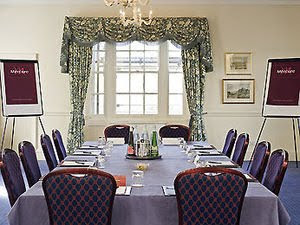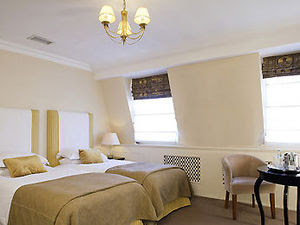| ||||||||||||||||||||||||||||||||||||||||||
........................................Con duong thanh danh cua KTS can rat nhieu dam me,tai nang,su kien tri va nhan nai
Bài đăng Phổ biến
-
Scholl Residence During the 1950s and 1960s a number of outstanding architects including Mies van der Rohe, Richard Neutra and Ray Eames we...
Wednesday, March 16, 2011
Intelligent design
Được đăng bởi
Mobile phone : 0937681084 Arch.Tran Nam Ha. HoChiMinh University of Architect
vào lúc
6:48 PM
0
nhận xét


DRDS wins competition in Korea
| ||||||||||||||||||||||||||||||||||||||||||||||||||||||||||||||||||||||||
Được đăng bởi
Mobile phone : 0937681084 Arch.Tran Nam Ha. HoChiMinh University of Architect
vào lúc
6:32 PM
0
nhận xét


Thursday, February 24, 2011
Elemental design

DeStefano Partners to build multipurpose development in China based on values of serenity, connectivity, vitality and humanity
Plans for a 94,000 sq m multipurpose development in Suzhou, China, have won DeStefano Partners an international competition for the project held by Suzhou Wuzhong Guoyu Asset Management Co. Suzhou Wuzhong North Road Development is set to include a variety of high-rise office buildings, residential, hotel and retail facilities
DeStefano’s design is based on four elemental factors – ‘Serenity, Connectivity, Vitality and Humanity’. As the site is bordered with canals to the east and north and major traffic roads to the west and south, the design firm felt it was necessary to create a space that was tranquil and ‘shielded from the commotion of the city’. They responded to the site’s island-like condition by forming the elemental structures in a ‘ring’ around a central public courtyard to create a sense of serenity. A network of streets between the pavilions has been incorporated into the design to create a pedestrian-friendly environment, whilst a raised circulator network is also in consideration to connect the development with adjacent districts. This circulator would run through the middle of the proposed development, connecting the site with new developments to the north and south, all the way to the Grand Suzhou Canal. A sense of vitality is also intrinsic to the project, as DeStefano propose ‘diverse programmes, combined vertically and horizontally, [to create] an economically sustainable and flexible environment’. Whilst the achieved level of vitality can only truly be measured on completion, the inclusion of 10 cinema halls, 200,00 sq m of retail space, 115,000 sq m of office facilities and 1000 hotel rooms imply that these demands are to be met once the development is up and running. Last but by no means least is the element of humanity. The design is intended to provide a ‘cultural and intellectual experience’ for all users, via a range of facilities and architectural forms. Serenity, connectivity, vitality and humanity are all well and good, but when it comes to architectural design, material matters. The podium portion of the development is set to incorporate concrete and wooden screen elements over a glass enclosure, the ring is to be encased in a white, glazed terracotta facade system and concrete panelling has been proposed for the low rise-hotel. The high-rise towers are to sport vertical and horizontal louvers alternating around the facade to ensure maximum energy efficiency. DeStefano Partners are currently going through contract negotiations and are planning to finish design development for phase one (of two) by the end of 2010, with construction scheduled to begin in spring 2011.











Được đăng bởi
Mobile phone : 0937681084 Arch.Tran Nam Ha. HoChiMinh University of Architect
vào lúc
5:57 PM
0
nhận xét


Wednesday, February 16, 2011
Reflecting the past, projecting the future
| ||||||
Được đăng bởi
Mobile phone : 0937681084 Arch.Tran Nam Ha. HoChiMinh University of Architect
vào lúc
6:04 AM
0
nhận xét


Bringing power to the people
| ||||||
Được đăng bởi
Mobile phone : 0937681084 Arch.Tran Nam Ha. HoChiMinh University of Architect
vào lúc
5:58 AM
0
nhận xét


Green light for Metropoliya
| ||||||
Được đăng bởi
Mobile phone : 0937681084 Arch.Tran Nam Ha. HoChiMinh University of Architect
vào lúc
5:54 AM
0
nhận xét


All angles covered
| ||||||
Được đăng bởi
Mobile phone : 0937681084 Arch.Tran Nam Ha. HoChiMinh University of Architect
vào lúc
5:52 AM
0
nhận xét


Monday, February 14, 2011
architecture hotel-spa
Sofitel Paris Arc de Triomphe — Paris, France
Style: Classic Luxury. Built: 1900. Remodeled: 2000. Rooms: 135. Suites: 7.Ideally located on one of the quiet streets in Paris’ Golden Triangle, Sofitel Paris Arc de Triomphe is poised in Haussmann-style stateliness. Just a few minutes away, the most beautiful luxury and fashion boutiques await you, in the midst of the capital’s business and leisure district.





Trump International Beach Resort
Style: Classic Luxury. Remodeled: 2008. Rooms: 257.Andaz, a new venture from the Hyatt brand, stands for more than just the name of our West Hollywood hotel. Meaning “personal style” in Hindi, we’re committed to bringing you the latest in style, service and high-touch innovation.





Trump International Beach Resort
18001 Collins AvenueSunny Isles Beach, FL US 33160

Located just north of Miami Beach, this international resort community is a world away from the everyday. Convenient to all of the South Florida pleasures you would expect, including major attractions, superb dining, South Beach, and world class shopping at nearby Bal Harbor and Aventura. Miami and Fort Lauderdale International Airports are within 30 minutes and are easily accessible., Hotel is a 100pct Smoke Free Hotel.










 Mercure Francis Hotel Bath
Mercure Francis Hotel Bath
Queen Square
Bath, BA1 2HH
United Kingdom

Mercure Francis Hotel Bath










Queen Square
Bath, BA1 2HH
United Kingdom
| Situated in the heart of the World Heritage City of Bath, The Francis has an unsurpassable location. An elegant Georgian building with 95 en suite bedrooms, Square Restaurant, Wood Bar and Lounge with limited, chargeable parking at the rear. Bristol Airport is just 15 miles from the Hotel. Two conference and banqueting suites can host up to 90 people with instant WiFi in selected rooms and public areas. The Royal Crescent, Circus, Roman Baths, Abbey and Thermae Spa are all within walking distance. |
Check-in/Check-out Policies
|
Được đăng bởi
Mobile phone : 0937681084 Arch.Tran Nam Ha. HoChiMinh University of Architect
vào lúc
6:29 AM
0
nhận xét


Subscribe to:
Posts (Atom)






















